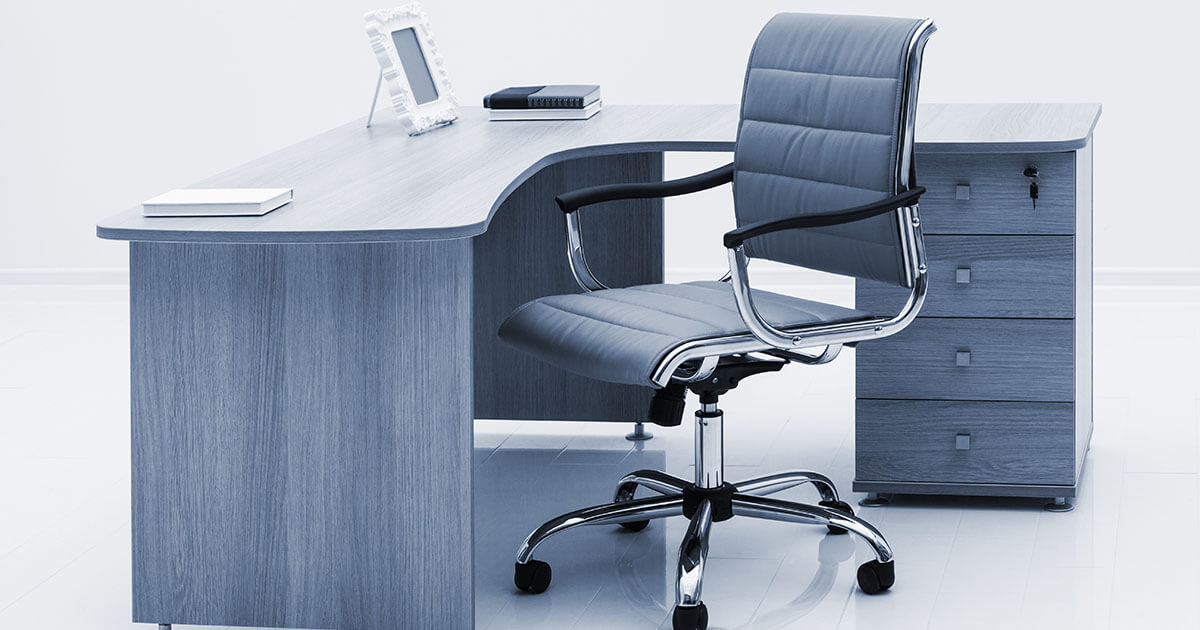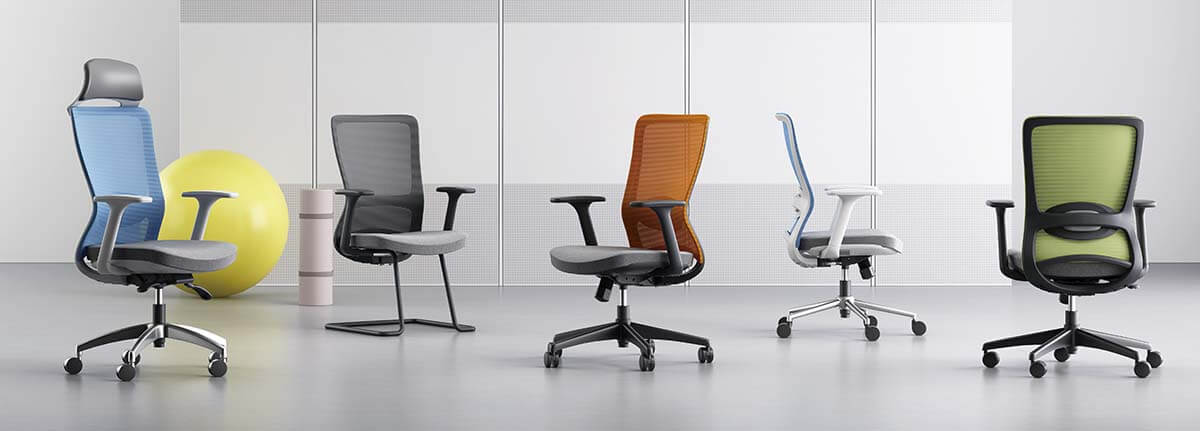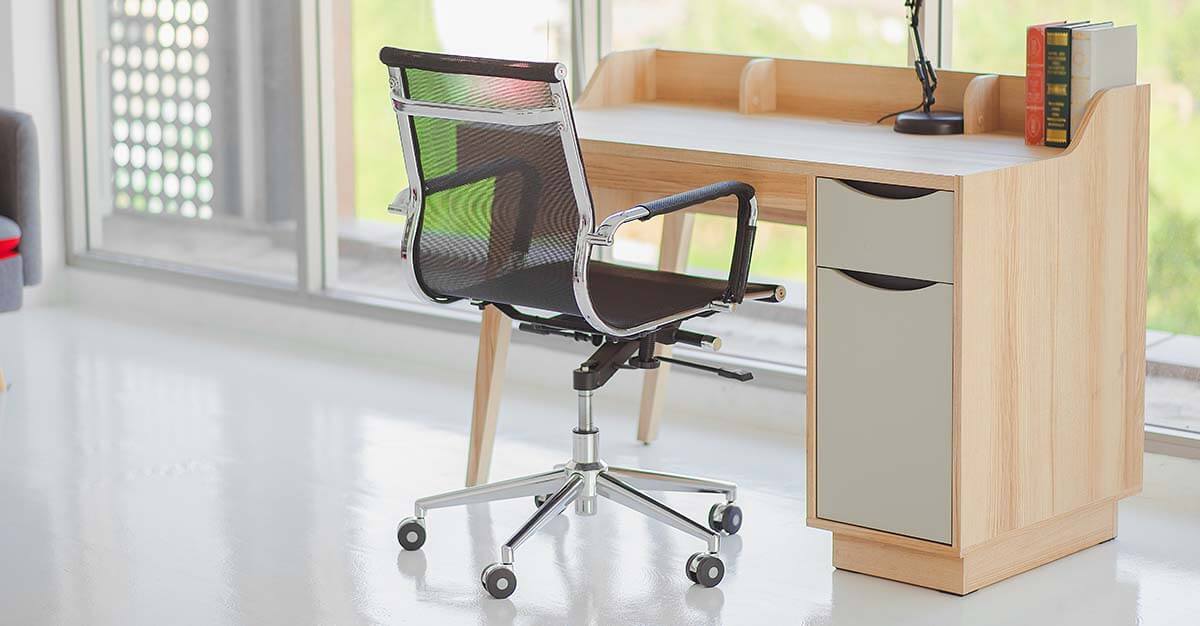
We collect basic website visitor information on this website and store it in cookies. We also utilize Google Analytics to track page view information to assist us in improving our website.

An ergonomic chair is a type of chair specifically designed to provide optimal support, comfort, and proper posture for individuals who spend long hours sitting at a desk or workstation. The goal of an ergonomic chair is to minimize the risk of developing musculoskeletal disorders and promote overall well-being.
An ergonomic chair is an important part of creating an ergonomic workstation. By incorporating an ergonomic chair into the workstation design, organizations prioritize the health and well-being of their employees. The chair, along with other ergonomic components, contributes to reducing the risk of work-related injuries, improving posture and comfort, increasing productivity, and enhancing overall job satisfaction.
The history of ergonomic chairs dates back several decades, with continuous developments and improvements driven by the growing understanding of human ergonomics and the need for comfortable and supportive seating in various settings. Here is a brief overview of the history of ergonomic chairs:
In the early 20th century, pioneers such as Frederick Winslow Taylor and Frank Gilbreth began studying work efficiency and worker comfort. They introduced concepts like "scientific management" and conducted studies to optimize work processes, including seating arrangements. However, ergonomic principles were not widely implemented at that time.
After World War II, ergonomic research gained more prominence. Designers and researchers recognized the importance of considering human factors in the design of products, including chairs. The focus shifted towards creating furniture that supported proper posture and reduced the risk of musculoskeletal disorders.
In the 1970s, ergonomic standards and guidelines started to emerge. Organizations such as the International Organization for Standardization (ISO) and the American National Standards Institute (ANSI) developed standards for office furniture, including chairs, to promote safety, comfort, and productivity.
In the 1980s and 1990s, ergonomic chairs began incorporating adjustable features. This allowed users to customize their seating positions, including height adjustments, seat tilt, and backrest angle. Adjustable armrests were also introduced to support the arms and shoulders in various positions.
As ergonomic research progressed, designers and manufacturers started implementing scientific findings in chair design. They focused on factors such as lumbar support, seat contours, cushioning, and materials that provided optimal comfort and alignment.
The advancement of technology in recent years has contributed to the development of more sophisticated ergonomic chairs. This includes the use of advanced materials, ergonomic mechanisms, and innovative designs that offer enhanced support, flexibility, and adjustability.
In recent years, there has been a growing emphasis on "active sitting," which encourages natural movement and engagement of core muscles while sitting. Ergonomic chairs now incorporate features like dynamic seating, lumbar support adjustments, and flexible backrests to promote healthier sitting habits.
Alongside general office chairs, specialized ergonomic chairs have been designed for specific professions and settings. This includes chairs tailored to the needs of medical professionals, computer programmers, laboratory workers, and other occupations that require extended periods of sitting.

A good ergonomic chair can make a world of difference by reducing fatigue and making it easier to perform daily tasks. Read our blog posts on the importance of ergonomic workstations for more information (link) on the benefits of having an ergonomic chair.
But what makes a great ergonomic chair? Isn’t any chair you buy at your local big box store considered to be ergonomic? Let’s review some of the features that an ergonomic chair must have to help you in your day-to-day tasks at work:
Ergonomic chairs offer various adjustable features that allow users to customize their seating position according to their individual needs.
An ergonomic chair allows users to adjust the height of the seat to ensure that their feet are flat on the floor or supported by a footrest. This helps maintain proper posture and reduces strain on the lower back and legs. Height-adjustable seats enable users to position their feet flat on the floor or on a footrest, promoting proper leg and knee alignment. Almost any office chair you buy should come with the ability to adjust the height of the chair.
The backrest of an ergonomic chair should be adjustable in both height and angle. This allows users to find a comfortable position that supports the natural curvature of the spine and provides adequate support to the upper back and shoulders. The ability to adjust the backrest tilt and recline angle enhances comfort and reduces stress on the spine.
Adjustable armrests help prevent strain on the shoulders and neck by supporting the arms at a comfortable height and angle. By aligning your arms properly, your chair supports your forearm and wrists at a comfortable angle for typing on your keyboard or moving your mouse. Proper wrist and forearm posture will help reduce fatigue and help prevent issues like carpal tunnel syndrome. The armrests should be adjustable in height, width, and angle to accommodate different body types and preferences.
A good ergonomic chair provides adequate lumbar support to maintain the natural curve of the lower spine. It helps prevent slouching and promotes a healthy alignment of the spine.
Your chair should provide essential support to maintain proper posture while sitting for extended periods. It helps align the spine, particularly the lumbar region, and reduces the strain on the neck, shoulders, and back. By promoting good posture, it minimizes the risk of developing musculoskeletal disorders and discomfort.

The seat of an ergonomic chair should have sufficient depth and width to provide proper support and accommodate different body sizes. Users should be able to sit with their backs against the backrest while leaving a few inches of space between the edge of the seat and the back of their knees.
Ergonomic chairs typically have a swivel feature that allows users to rotate easily without straining their backs. Smooth mobility and the ability to move around the workstation effortlessly are important aspects of ergonomic chairs.
Ergonomic chairs typically feature a swivel mechanism that enables easy movement and access to different areas of the workstation without straining the body. The ability to move and rotate smoothly helps improve efficiency and workflow, reducing the need for repetitive reaching or twisting.
Ergonomic chairs are often made of breathable materials that promote air circulation and prevent heat buildup. The seat and backrest should have enough padding to provide comfort without being too soft or too firm.
An ergonomic chair is designed with user comfort in mind. It is often padded and upholstered with breathable materials that provide cushioning without sacrificing support. The seat and backrest contours are engineered to distribute body weight evenly, reducing pressure points and allowing for extended sitting without discomfort.
In modern work environments that promote collaboration and teamwork, ergonomic chairs with mobility and flexibility become even more valuable. They allow for easy interaction with colleagues, quick transitions between tasks, and adaptability to different workstations or work setups.
An ergonomic chair is an integral part of a larger ergonomic workstation design. It works in tandem with other ergonomic elements such as adjustable desks, monitor placement, keyboard and mouse positioning, lighting, and accessories to create a cohesive and harmonious setup that optimizes comfort, productivity, and well-being.
While ergonomic chairs aim to provide comfort and support, it's important to remember that excessive sitting, regardless of the chair's quality, can still have negative health effects. Prolonged sedentary behavior is associated with various health risks, including cardiovascular issues, obesity, and musculoskeletal problems. It's important to incorporate regular movement and breaks into your routine, even with the use of an ergonomic chair.
Sit/stand desks, also known as height-adjustable desks or standing desks, offer numerous advantages that contribute to improved health, productivity, and overall well-being. These desks allow users to switch between sitting and standing positions, promoting active movement, and reducing the risks associated with prolonged sitting. By engaging different muscle groups and increasing blood circulation, sit/stand desks help prevent the negative effects of sedentary behavior, such as obesity, cardiovascular disease, and musculoskeletal issues.
The versatility and flexibility of sit/stand desks accommodate different work styles and tasks. Certain activities may be better suited for sitting, while others may benefit from a standing position. The ability to switch between sitting and standing throughout the day provides flexibility to cater to varying work requirements and personal preferences.
It's important to note that sit/stand desks should not replace regular physical activity or exercise. They should be complemented with movement breaks, stretching, and other forms of physical activity to maximize the benefits. Finding the right balance and gradually transitioning between sitting and standing is key to reaping the advantages of a sit/stand desk.

In conclusion, the importance of ergonomic chairs in radiology reading rooms cannot be overstated. These chairs are specifically designed to provide optimal support, comfort, and proper posture for individuals who spend long hours sitting at their workstations.
By incorporating ergonomic chairs into the workstation design, organizations prioritize the health and well-being of their employees, ultimately leading to various benefits.
When designing an ergonomic workstation, companies like RedRick Technologies can offer valuable assistance. RedRick Technologies specializes in designing ergonomic workstations, including ergonomic chairs and sit/stand desks, to optimize comfort, productivity, and overall well-being.
In summary, ergonomic chairs play a vital role in radiology reading rooms by promoting the health and well-being of radiologists. By incorporating ergonomic principles and utilizing adjustable features, these chairs reduce the risk of work-related injuries, improve posture and comfort, increase productivity, and enhance job satisfaction. Pairing an ergonomic chair with a sit/stand desk further contributes to a healthier and more dynamic work environment.
Considering the expertise of companies like RedRick Technologies can help organizations design ergonomic workstations tailored to their specific needs. Prioritizing the ergonomics of radiology reading rooms benefits both the individuals working in them and the overall efficiency of the healthcare facility.